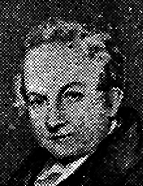

The two works that garnered him the most attention were undoubtedly Memoirs of the Life and Writings of Luis de Camoens (1820) and Lusitania Illustrata (1842-46). Regarding Memoirs , it is important to highlight that its publication marked a significant milestone in the history of Camonian studies, as it was the first European monograph on Camões, providing an in-depth and specialised examination of the life and work of the Portuguese poet, many decades before the publications by Richard Burton ( Camoens: His Life and his Lusiads , 2 vols. 1881) and Wilhelm Storck ( Luis de Camoens Leben, nebst geschichtlicher Einleitung , 1890). Across two volumes, Adamson compiles as much biographical, bibliographical, and critical information on Camões as possible, drawing on careful reading of the majority of works that had been published up to that point. Following a trend characteristic of Romanticism, Adamson primarily aimed to reconstruct the poet's biography in a lengthy essay, using Camões' works as the foundation for his work. He focused on passages from Os Lusíadas and various lyrical compositions, as they contain autobiographical references and authentically express the poet's emotions. In fact, this methodology had been previously adopted by Romantic authors that Adamson met, such as Lord Strangford ( Poems from the Portuguese of Luis de Camoens: With Remarks on His Life and Writings, Notes, etc., 1803) and Morgado de Mateus ( Os Lusíadas, Poema Épico de Luís de Camões [The Lusiads, Epic Poem from Luís de Camões], 1817).
However, our author went further than his predecessors by aiming, for the first time and in a systematic and generalised manner, to reconstruct the author's biography through an annotated reading of his lyrical works. Adamson's portrayal of Camões reflects both the Romantic conception of the poet during that era and a mythical vision of the Lusitanian poet — the outcast and disgraced genius, victimised by human incomprehension and the hostility of nature, yet also regarded as a symbol of the golden age of Portuguese history and culture. The significance and importance of this true milestone in the chronology of Camonian Studies prompted the Lisbon Academy of Sciences to appoint him an honorary member during its ordinary session on 28 April 1820.
This work is financed by national funds through FCT - Foundation for Science and Technology, I.P, in the scope of the projects UIDB/04311/2020 and UIDP/04311/2020.
